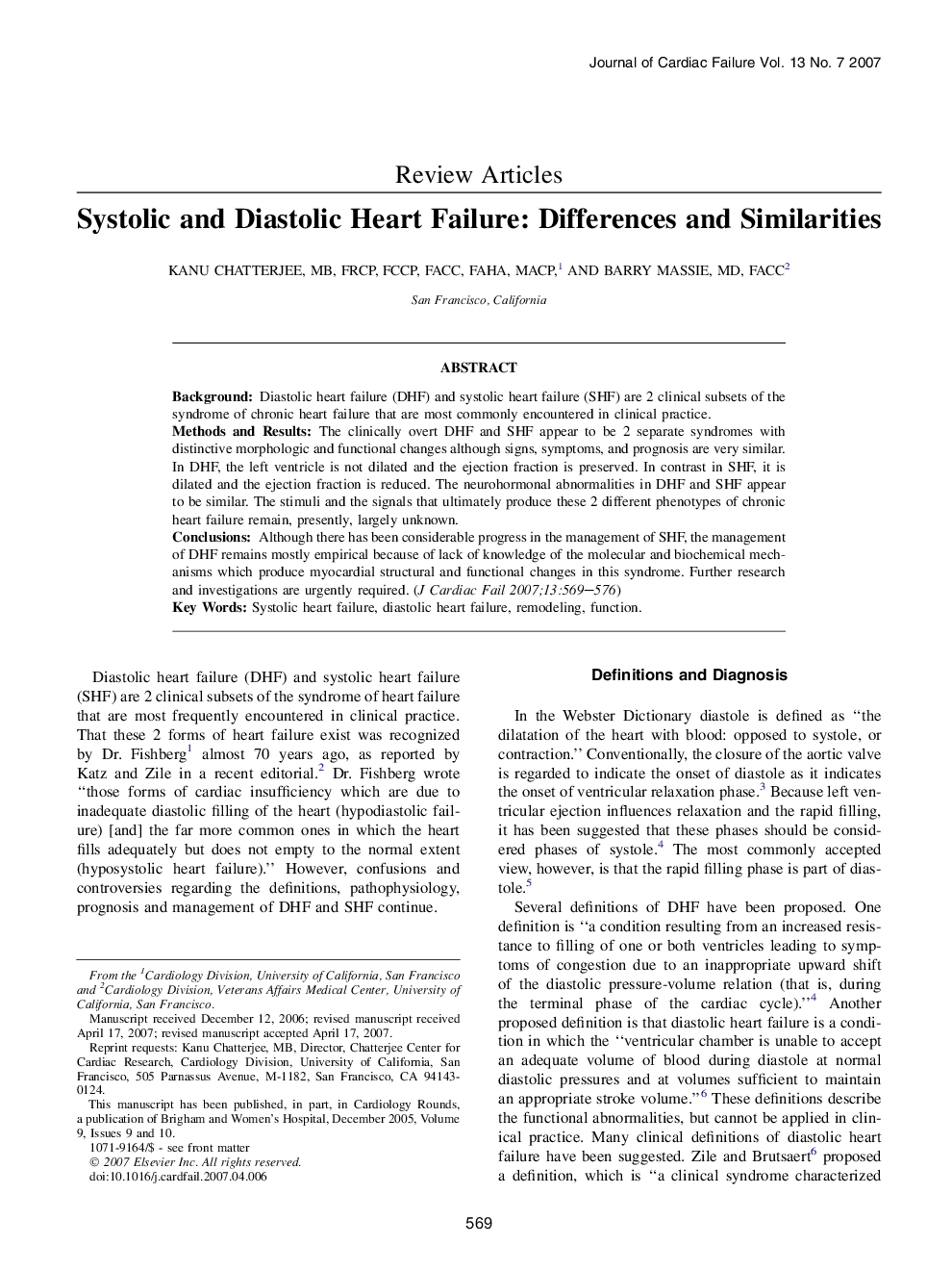| Article ID | Journal | Published Year | Pages | File Type |
|---|---|---|---|---|
| 2960194 | Journal of Cardiac Failure | 2007 | 8 Pages |
BackgroundDiastolic heart failure (DHF) and systolic heart failure (SHF) are 2 clinical subsets of the syndrome of chronic heart failure that are most commonly encountered in clinical practice.Methods and ResultsThe clinically overt DHF and SHF appear to be 2 separate syndromes with distinctive morphologic and functional changes although signs, symptoms, and prognosis are very similar. In DHF, the left ventricle is not dilated and the ejection fraction is preserved. In contrast in SHF, it is dilated and the ejection fraction is reduced. The neurohormonal abnormalities in DHF and SHF appear to be similar. The stimuli and the signals that ultimately produce these 2 different phenotypes of chronic heart failure remain, presently, largely unknown.ConclusionsAlthough there has been considerable progress in the management of SHF, the management of DHF remains mostly empirical because of lack of knowledge of the molecular and biochemical mechanisms which produce myocardial structural and functional changes in this syndrome. Further research and investigations are urgently required.
